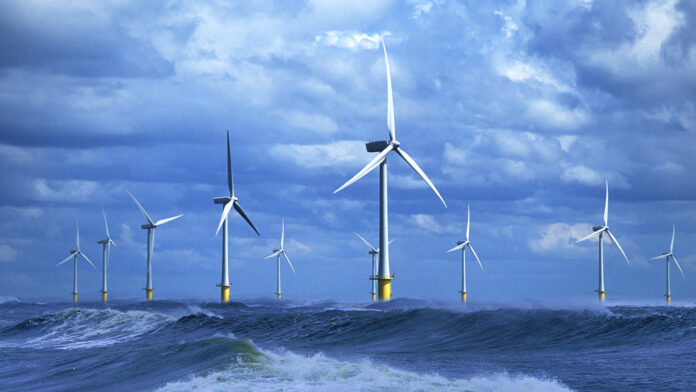
Harnessing the Wind in the Baltics
EURACTIV is an independent pan-European media network specializing in EU policies, founded in 1999 by the French media publisher Christophe Leclercq.[1] Its headquarters and central editorial staff are located in Brussels, although its content is produced by journalists in Belgium, Bulgaria, the Czech Republic, France, Germany, Greece, Italy, Poland, Romania, Serbia, and Slovakia. EURACTIV has been covering the European Parliament and other EU institutions for twenty years. Its editorial coverage includes European politics in Brussels as well as more in-depth analysis of EU policies in areas such as energy and environment, agriculture, food safety, transport and tech policy.
This month, EURACTIV.com published an article by Lukas Trakimavičius, who works at the Research and Lessons Learned Division of the NATO Energy Security Centre of Excellence. He previously worked at NATO and the Lithuanian Ministry of Foreign Affairs. He writes that offshore wind could upgrade the Baltics to the forefront of energy transition, and bring them into the ranks of clean energy exporters.
Although the Baltics have made great strides in making their energy systems cleaner, fossil fuels still remain a staple. Trakimavičius notes that there is growing evidence to suggest that the Baltics have a massive offshore wind energy potential, which could have a game-changing effect for the entire region. Wind turbines would be the key.
The Baltics, like most of Europe, get most of their energy from fossil fuels such as oil and natural gas. These are either imported from far abroad or, as is the case with Estonian oil shale, mined from deep underground. However renewables such as onshore wind, solar or hydropower still account for a tiny fraction of their overall energy needs. In 2019, these energy sources met about 2.6% of Lithuania’s, 4.6% of Latvia’s and 1.3% of Estonia’s total primary energy demand.
What the Baltics lack in fossil fuels, they make up for with an abundance of wind in the Baltic Sea, which can be harnessed and converted into electricity, says Trakimavičius. Although currently none of the Baltics have any windmills in the open seas, all three have major offshore wind plans for the future. Lithuania, for example, intends to have at least 700 megawatt (MW) of offshore wind farms in operation by 2030. Latvia and Estonia are hoping to co-develop a joint 1,000 MW wind farm in the Gulf of Riga. In addition, Estonia wants to have a 1,000 MW offshore wind park near the island of Saarema by 2028, and other projects are under consideration.
According to a recent WindEurope study, the Baltic Sea could be the next big thing for Europe’s energy transition. Lithuania could have up to 3,600 MW, Latvia up to 2,900 MW and Estonia up to 1,500 MW of offshore windfarms by 2050. If this generation capacity could be met, the study claims that the Baltics could potentially export around half of their offshore wind electricity to neighboring states. If the Baltics were to harness their full offshore wind potential and continue to develop other renewable sources of energy, it is quite certain that a large amount of their electricity might still be available for export.
Trakimavičius explains that the Baltics could also take some of this newfound electricity and transform it into green hydrogen using a process known as electrolysis. Green hydrogen could be used for manufacturing, transport, heating or converted back into electricity to back up the grid. Or it could simply be exported to neighbouring states. This step would prevent excess electricity from being wasted and also help decarbonize those sectors of the economy where electrification is difficult. Green hydrogen not only would assist in the energy transition of the Baltics and their neighbours, but would also support the European Union’s goal of achieving climate neutrality by 2050.
Reshaping Baltic energy systems would be neither easy nor cheap. The costs of windfarms, the energy infrastructure on the land and everything in between would run into the tens of billions, and would take decades to build. Even then the Baltics might not be able to totally forgo fossil fuels. Given the intermittency of offshore wind, the trio would most likely have to rely on natural gas to balance their grids.
Also, says Trakimavičius, offshore wind power and green hydrogen need to become a lot cheaper for this plan to succeed. Right now, offshore wind still has a tough time competing with fossil fuels such as coal or gas, and green hydrogen is around three times as expensive as other, fossil fuel-based types of hydrogen. But according to the International Renewable Energy Agency, thanks to technological improvements and higher capacity factors, offshore wind could become competitive with fossil fuels by 2030.
Similarly, as the availability of renewable energy increases and the costs of electrolyzers plummet, green hydrogen may become competitive with fossil-fuel based hydrogen as early as 2030.
If they succeed, the Baltics would make history by becoming more energy secure, more in tune with the environment and better positioned to meet the challenges of the future than ever before.
Adapted from euractiv.com






























